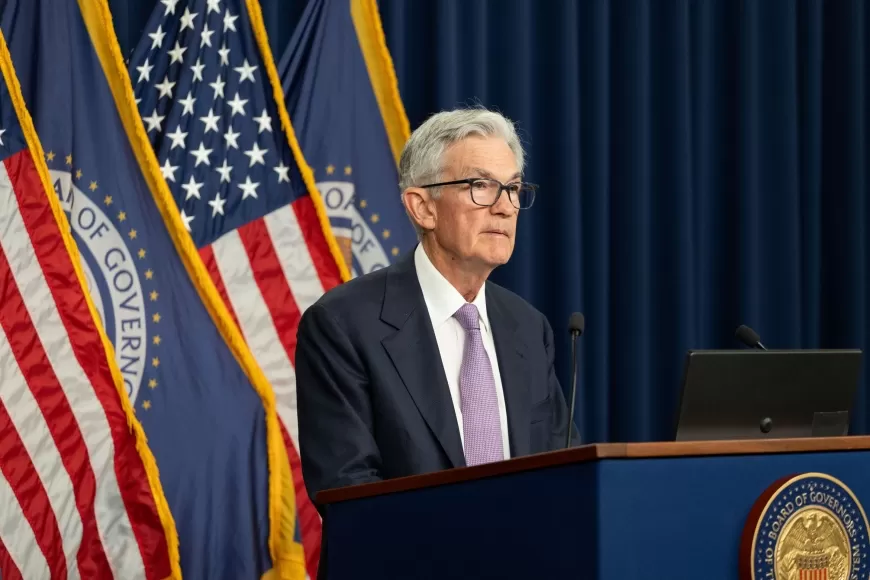Fed Plans Another Rate Cut: What It Means for You After the Election
With inflation cooling, the Fed is set to cut rates again just after Election Day. Here’s how this move could affect your loans, savings, and the economy in 2024.

The Federal Reserve is gearing up for another interest rate cut just two days after the upcoming U.S. presidential election. With inflation steadily cooling, this move marks the Fed's second rate cut this year, aiming to align with a more stable economic environment. While the presidential race results could still be pending, the Fed’s strategy to manage inflation remains clear.
A Calculated Rate Cut in Response to Tamed Inflation
On Thursday, the Fed is expected to announce a quarter-point rate cut, bringing its benchmark rate to around 4.6%. This move follows a recent half-point cut in September. The Fed’s decision to lower rates, in this case, isn’t driven by economic sluggishness or high unemployment. In fact, the job market is holding steady, with a low 4.1% unemployment rate, and overall economic growth remains resilient.
Instead, this rate cut is part of what Fed Chair Jerome Powell calls a “recalibration” toward a low-inflation environment. After inflation peaked at 9.1% in 2022, the Fed raised rates multiple times, pushing its key rate to a four-decade high of 5.3%. But with inflation now down to 2.4%—near the Fed’s target of 2%—policymakers are confident that high rates are no longer necessary to control inflation.
The Fed’s New Path and Gradual Rate Adjustments
Most Fed officials support a slow and steady approach to rate cuts, with many anticipating another quarter-point cut in December. By easing rates gradually, the Fed aims to bring down borrowing costs for both businesses and consumers, potentially supporting growth in interest-sensitive sectors like real estate and auto sales.
Christopher Waller, a member of the Fed’s Board of Governors, has emphasized the importance of determining “how much and how quickly” to reduce rates, signaling confidence in further reductions. However, the long-term plan remains unclear, with the Fed likely to reevaluate its approach based on economic signals.
Political Changes May Influence Future Rate Decisions
While the Fed’s next move is relatively predictable, future actions may hinge on political developments as a new president and Congress assume office in January. Should Donald Trump return to the White House, some of his proposed policies, like imposing sweeping tariffs and intensifying immigration enforcement, could impact inflation, according to economic experts.
Higher tariffs on imports, for instance, could drive up consumer prices, potentially pushing inflation back up. In response, the Fed may find itself needing to pause or even reverse its rate cuts to prevent inflation from getting out of hand. The question of maintaining the Fed’s independence could also arise if political pressures push for rate adjustments.
Balancing Inflation, Economic Growth, and Rate Levels
In recent statements, Powell has acknowledged the need for flexibility as the Fed navigates economic uncertainty. The ideal goal is to eventually reach a “neutral” rate level, where interest rates neither restrict nor overly stimulate growth. Economists estimate this neutral rate to be around 3% to 3.5%, while the Fed’s current rate of 4.9% remains above this neutral target.
Yet, there’s an ongoing debate about whether rates should be cut further. Some economists argue that with the economy showing resilience even at higher borrowing rates, the Fed might already be close to a balanced rate level. Joe LaVorgna, an economist, noted that with steady growth and low unemployment, “the current rate level may be more sustainable than it appears.”
Focus on Economic Stability Beyond Election Outcomes
In his upcoming press conference, Powell will likely address questions on how election results may influence the Fed’s direction. However, he’s expected to reiterate the Fed’s commitment to independent, data-driven decisions, regardless of political shifts. As policymakers evaluate inflation trends, consumer spending, and employment figures, their primary objective remains economic stability.
Amid post-election uncertainties, the Fed's clear focus is on managing inflation while supporting economic growth. For businesses and consumers, the anticipated rate cuts could mean a gradual easing of borrowing costs, offering some financial relief as the country enters a new phase in both its political and economic landscapes.
Also Read: Local Governments Spend Millions on Election Security for the US Presidential Election






























































